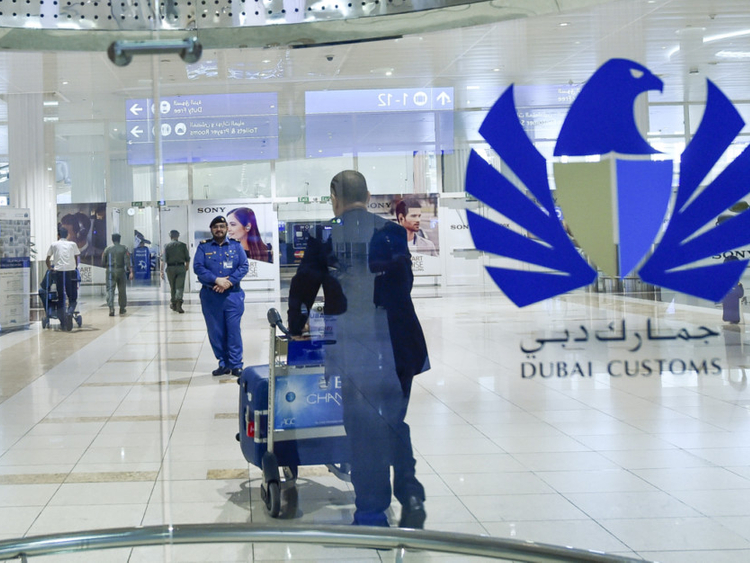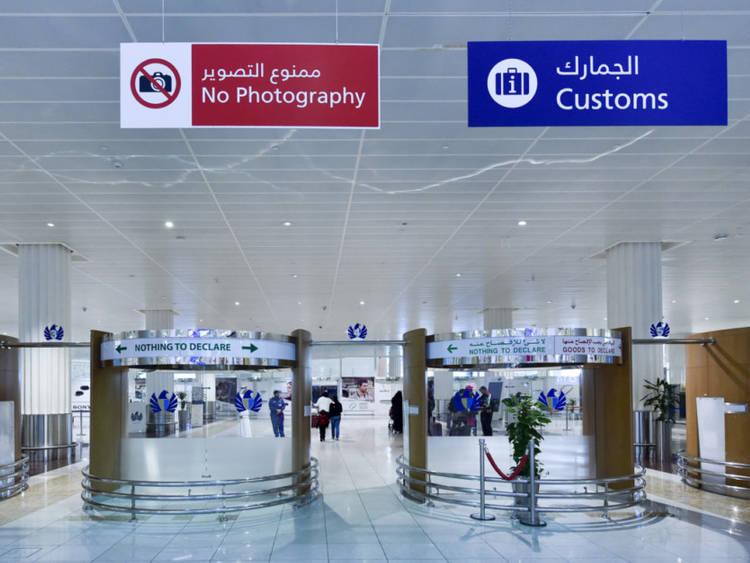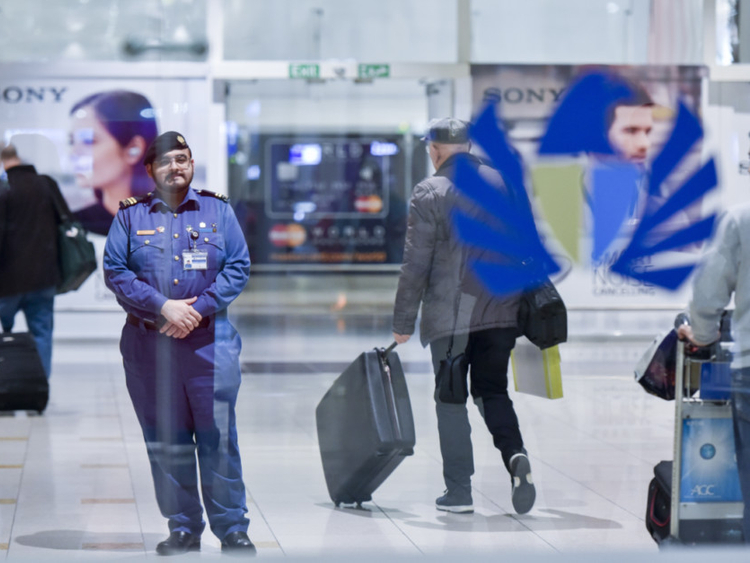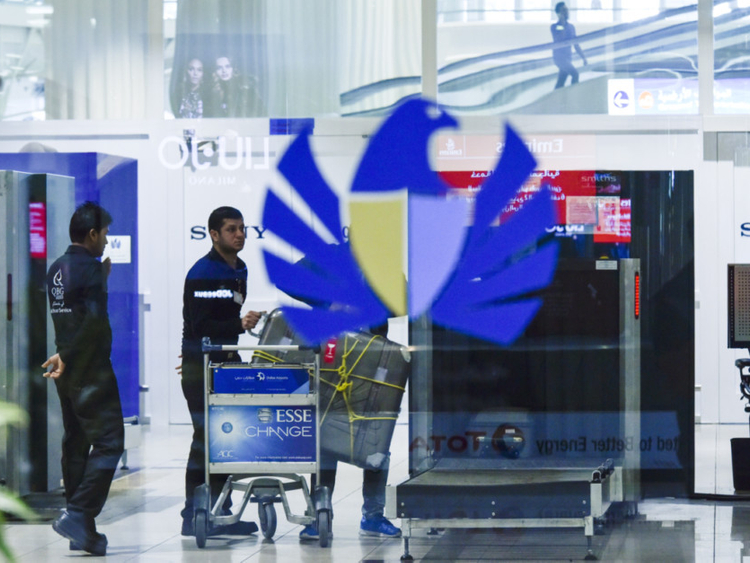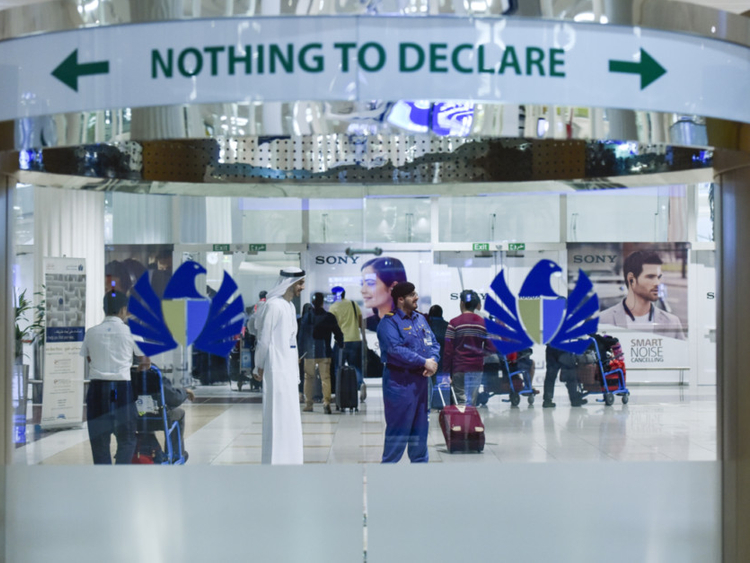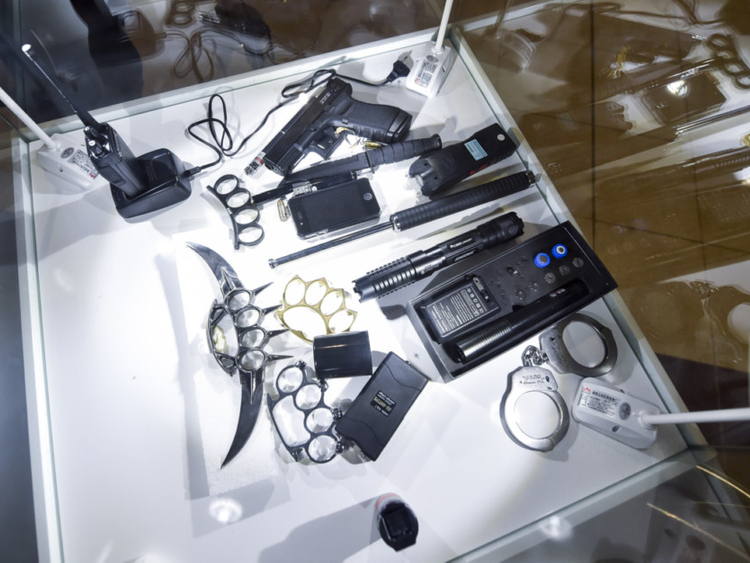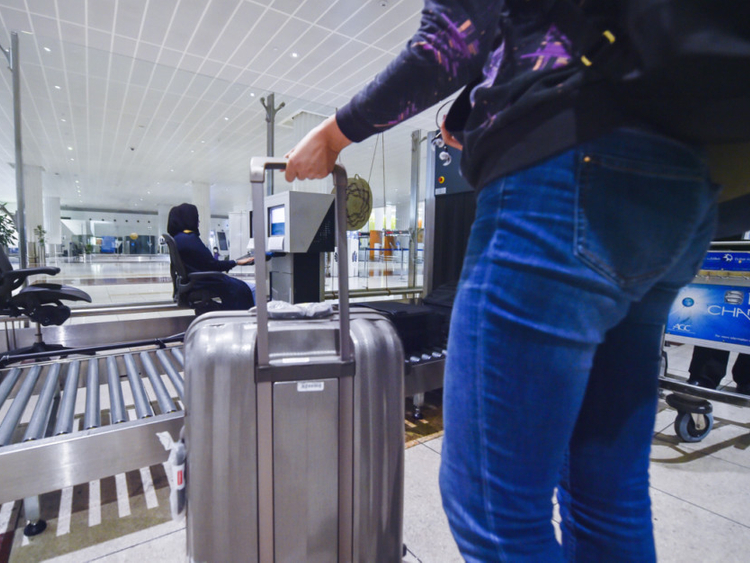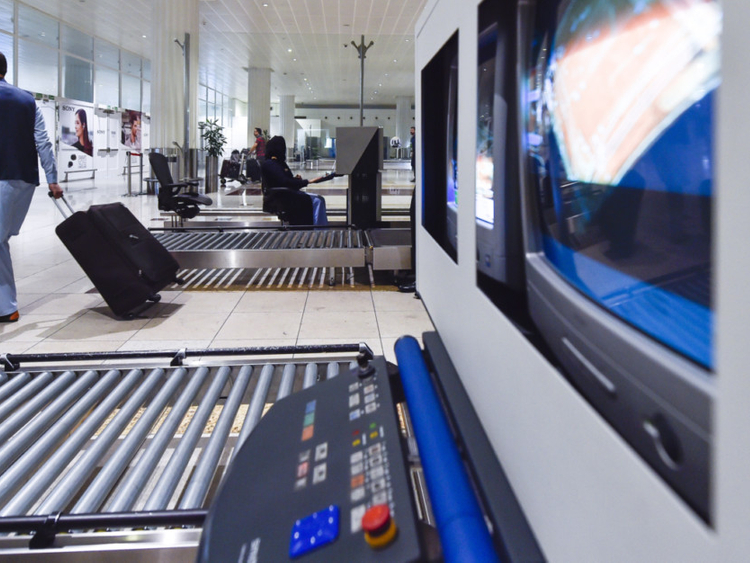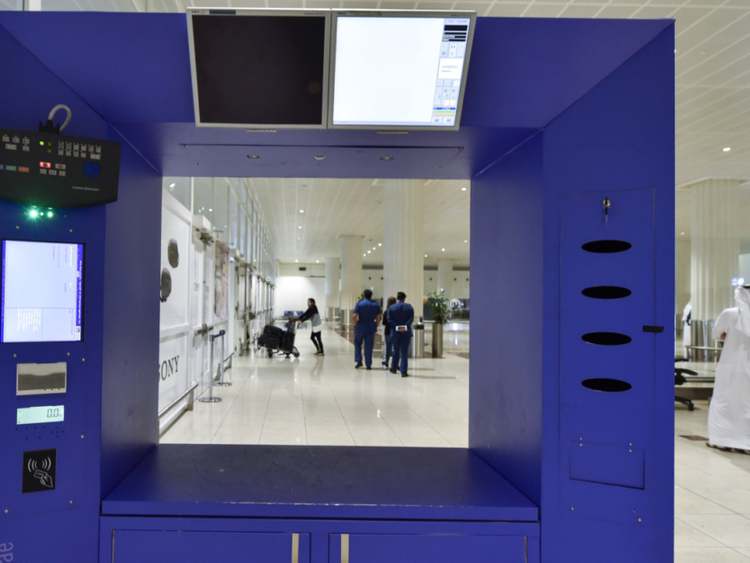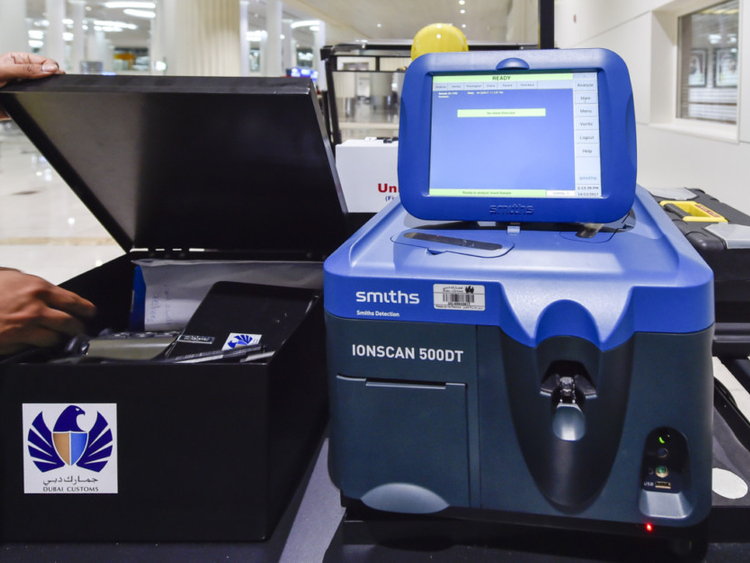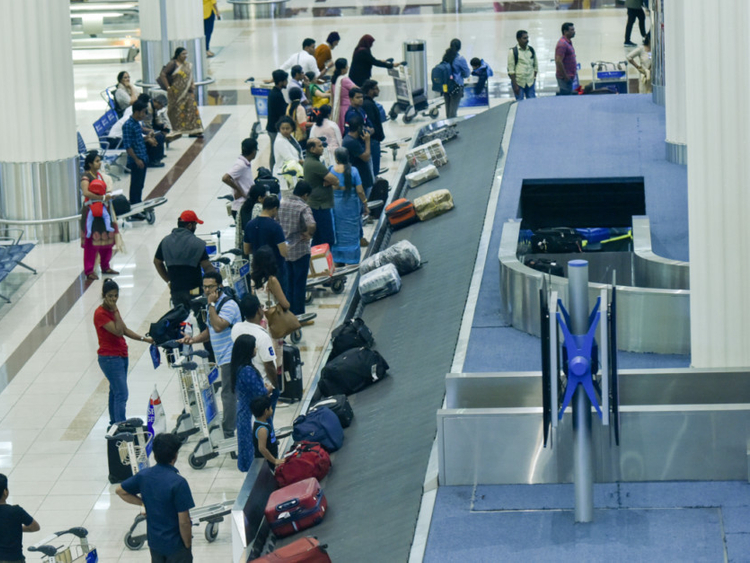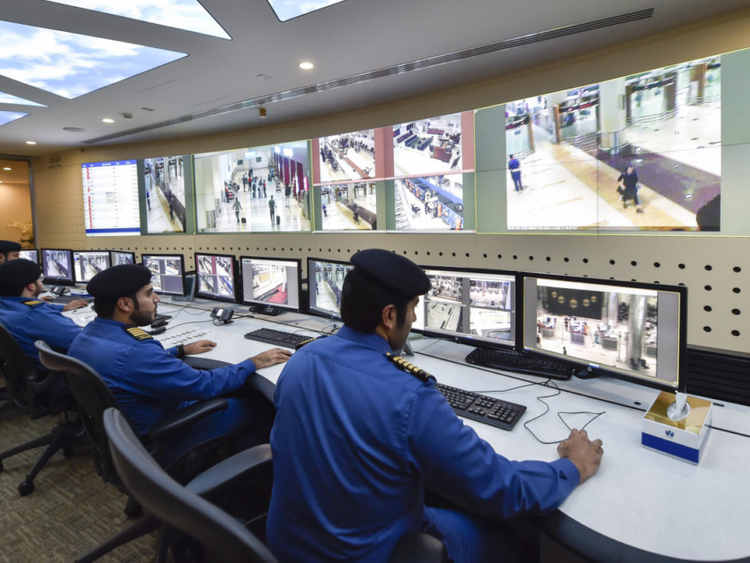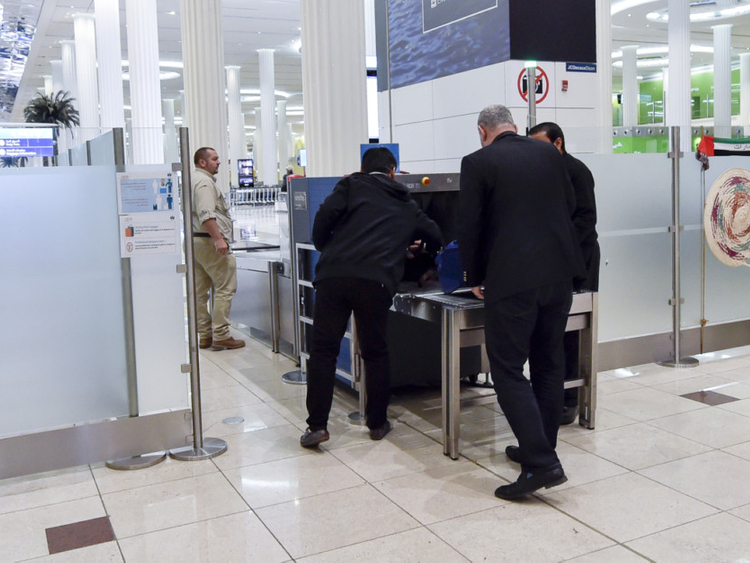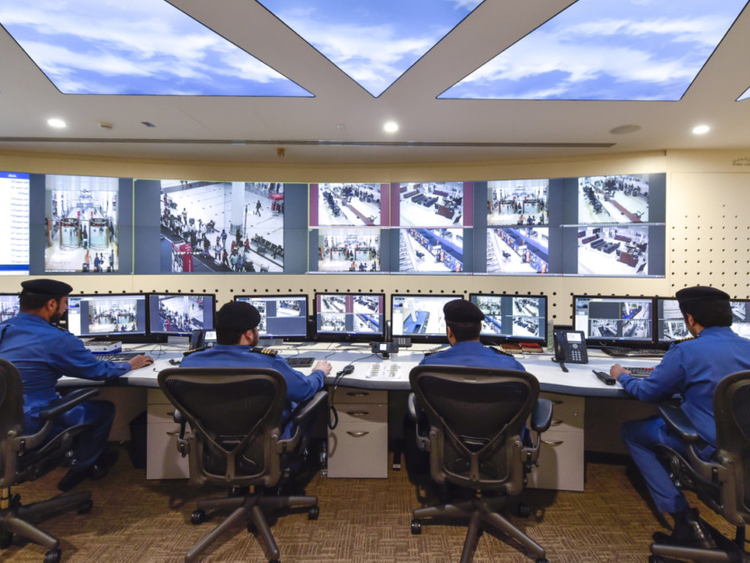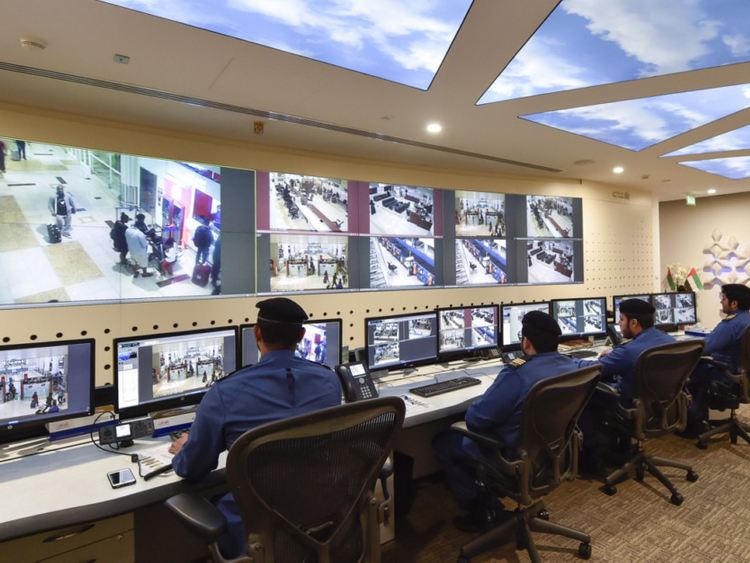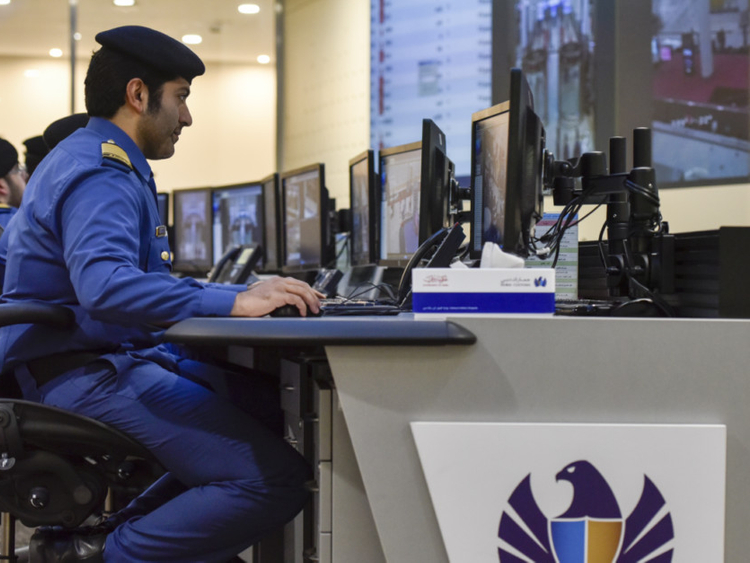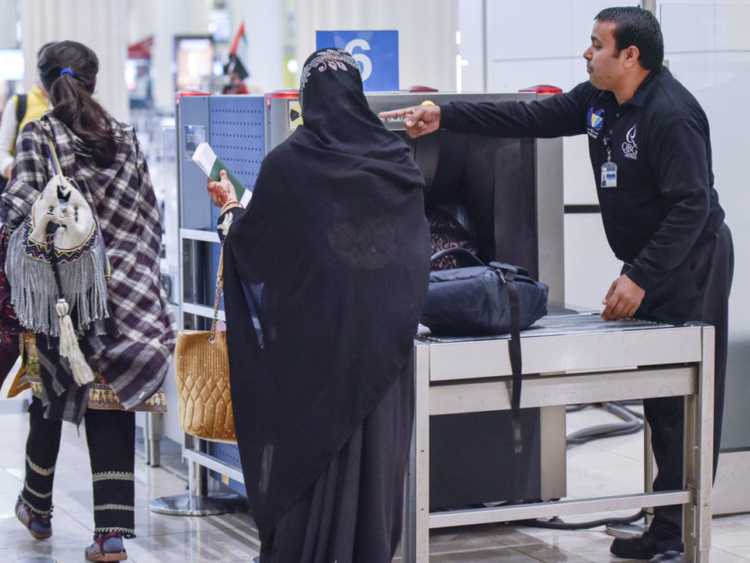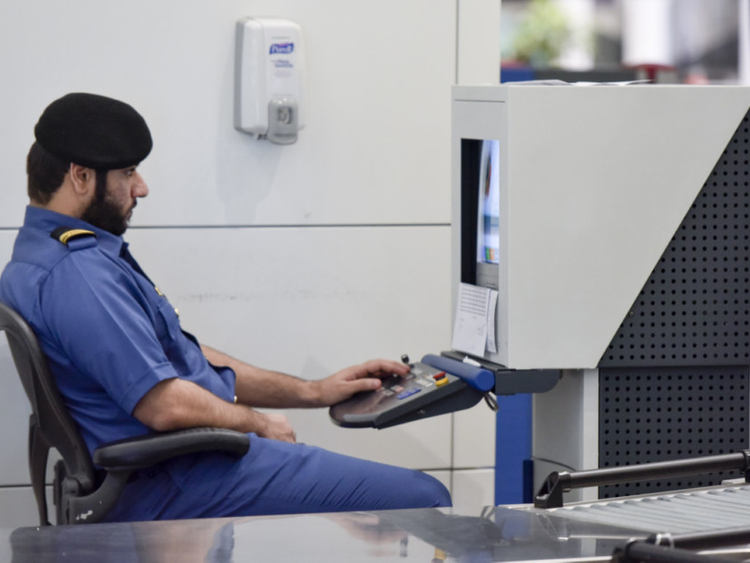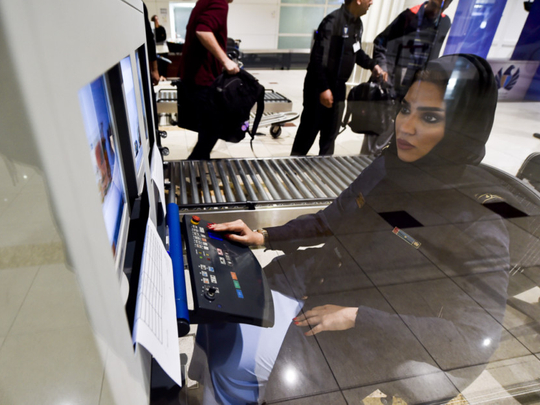
Dubai: Welcome to Dubai International Airport’s Terminal 3. You have landed at one of the world’s busiest airport terminals that handles at least 30,000 arrivals a day.
More than 50,000 items of luggage move on the baggage claim carousels each day and as you take your bag from the conveyor belt and walk through customs, all in reassuringly efficient time, have you ever wondered how Dubai Customs does all this so effortlessly?
In an exclusive, first-hand tour of Terminal 3, Gulf News gets a fascinating experience of Dubai Customs’ daily operations.
All passengers are screened 100%’
“In 2017, at Terminal 3, 10.6 million passengers and 20.9 million bags were screened by Dubai Customs from 90,568 flights,” said Khalifa Malik Bin Shahin, senior inspection manager, Airport Passenger Terminal Three.
20.9m bags
|
“We have adopted the most advanced customs inspection system in the world to check thousands of passengers every day without them knowing that they are being checked. All passengers are screened 100 per cent.”
Simultaneously, out of view of passengers, bigger baggage is already being screened and readied to be collected from the belts. “It takes an average of eight to ten minutes to finish the passenger movement from the first checkpoint to the last checkpoint,” he said.
There is a reason why you are checked
“No one is randomly asked to go for a check by customs inspectors at the airport,” said Mattar Rashid Al Muhairi, inspection team leader. “When people are asked to go for further checking, we have already enough reasons to suspect that they might be trying to bring in something that is not allowed.”
But there is a caveat: Baggage deemed suspicious will be checked further but only after the passenger has collected it from the belt and has passed through the customs gate. “We cannot [withhold] the bag without the passenger’s permission. Once the passenger collects his/her luggage, they are questioned first and then their bags are asked to be screened,” said Al Muhairi.
Smart Inspection Table and Kashif
Past the red and green gates, where people are sometimes called for further checking, is the Smart Inspection Table, a system that is able to secure the privacy of passengers during inspections by eliminating the need for inspectors to manually look through the luggage.
“When we suspect [the contents of a bag], there is a bar code we punch to begin the checking. We only check the area that needs to be checked,” said Al Muhairi.
The innovative table was developed entirely by a Dubai Customs employee, he says. “We use it to check any luggage within one-five minutes.
“If the bag is empty and it weighs more than 7kg, this tells us something is wrong,” he said.
Also in place to be used in all terminals when needed is the Kashif (detection) golf cart. Equipped with 14 devices, the technology is capable of detecting various narcotics, inflammable and radioactive materials, and explosives. The eco-friendly golf buggy can also analyse medication samples in seven minutes.
Inside the CCTV room
It’s the first customs CCTV room in the Middle East, and a whole other world operates here. “We call it our third eye, and from here we are able to monitor our belts, X-ray machines, passenger flow and movement, gates and our queues in the arrival area.”
Body language
Among the various methods employed by Dubai Customs to detect violations of the law is the study of passenger behaviour.
“We are very mindful of people’s body language. Even if they don’t have anything to hide, we still have to keep an eye out. Based on that, we build on their facial expressions, movement, the way they shake hands with us and how they respond to questions,” explained Al Muhairi.
He added that they work together with undercover officers and CCTV room personnel, who are also trained in reading passenger’s body language.
When a passenger’s body language indicates that they might be trying to smuggle illegal drugs into the country, in addition to other signs and tipoffs, body scanning technologies are put to use. Closed-inspection areas protect the privacy of the passenger, he explained.
Cracking the coconut
From hiding drugs in coconuts, in books, vegetables and even inside the human abdominal sac, travellers have attempted to smuggle in drugs through various ways believing their ingenuity will protect them. But Dubai Customs officials are way ahead of these attempts. “The abdominal ultrasound for the detection of intestinal drugs speeds up the process at the airport,” Bin Shahin points out. “It can check for any drugs hidden inside the body without exposing the passengers to any harmful radiation. We have had many cases of this sort.”
The machine has been able to bust many attempts by passengers to smuggle drugs into the country, said Al Muhairi. “Depending on how much their stomach can hold, they fill it with capsules and try to look very relaxed, but with our expertise, we can identify them.”
“We’ve had smugglers use new methods such as soaking clothes in drugs as well, but regardless of the methods they come up with, we will always be one step ahead to bust them,” said Bin Shahin.
Based on statistics revealed to Gulf News, from January to November 2017, Dubai Customs apprehended eight cases of people carrying drugs in their abdomen. There were 157 cases of people carrying opiates which amounted to 25,000 pills. There were also 187 drug cases which involved drugs weighing 315kg.
The man who had too much luggage
An Arab man caught the attention of the undercover staff and of officers in the CCTV room in Terminal 3 as his body language gave him away.
His suspicious demeanour was picked by the customs staff as he walked to the baggage claim belt. He picked up his luggage. Then, he walked over to another belt and took another item of luggage. That’s when he saw that something was going on. The man continued to do that for next four belts and picked more bags. He had collected more than five bags from different belts that did not belong to him. When he passed through the gates, we questioned him and asked him to open the bags, but he couldn’t because he did not have the keys to unlock two of them.”
The man then admitted that he had done this several times before in other countries. “He admitted that he stole the luggage to take anything valuable he could find inside them.” He was arrested on charges of theft.


